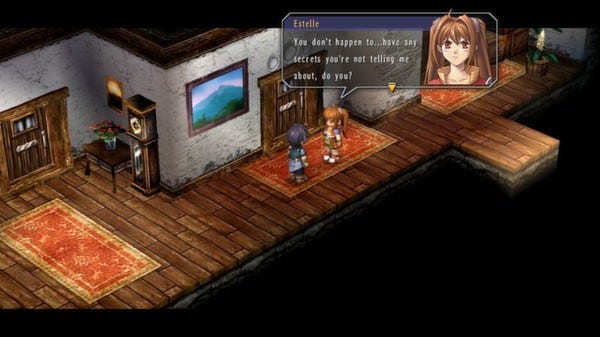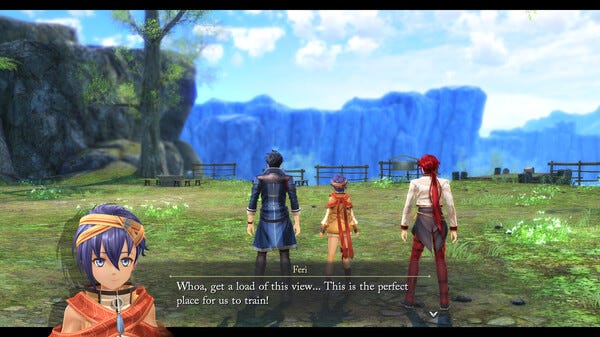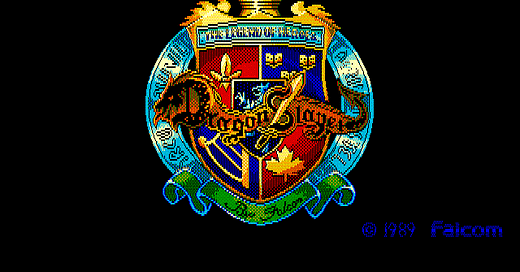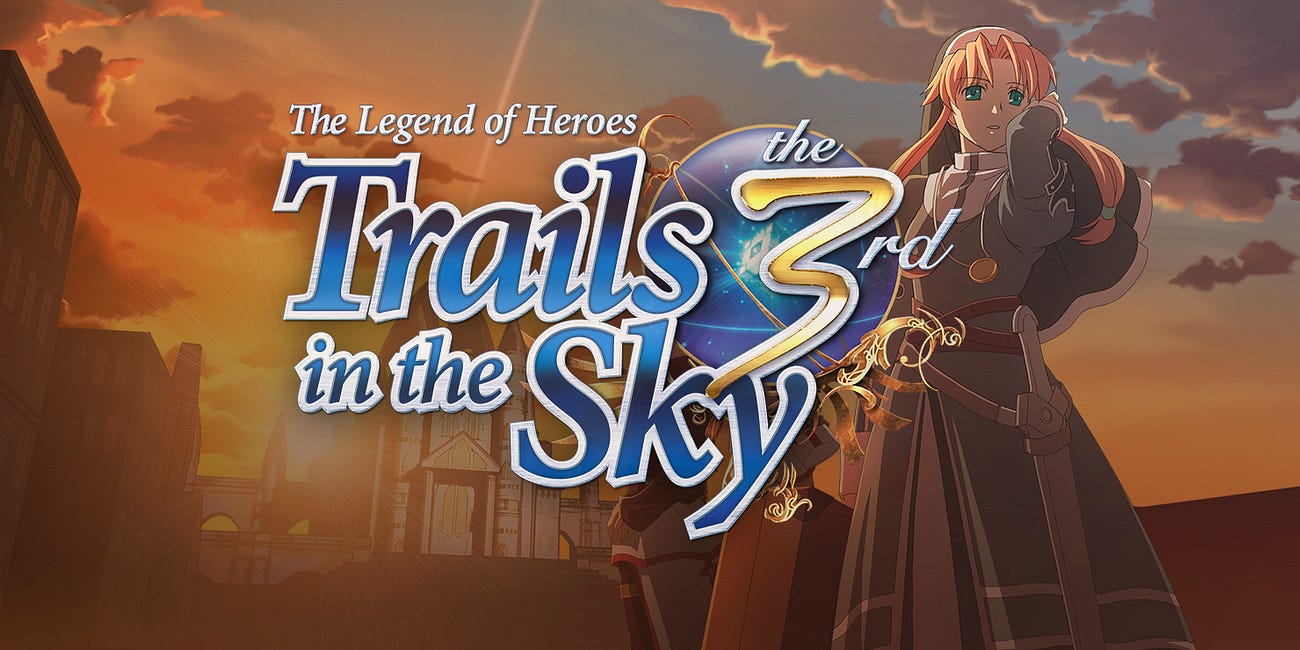40 years of Dragon Slayer: The Legend of Heroes, from subseries to successor
The Legend of Heroes began as a one-off, like every other Dragon Slayer entry, but it became its own thing, then grew and grew until it became the series people know Falcom for.
September marks 40 years of Nihon Falcom’s Dragon Slayer series, which had its original run ended with creator Yoshio Kiya’s exit from the company, but continues to exist to this day through subseries and spin-offs. Throughout the month, I’ll be covering Dragon Slayer games, the growth of the series, officially and unofficially, on a worldwide scale, and the legacy of Falcom’s contribution to role-playing games. Previous entries in the series can be found through this link.
By 1989, Falcom were set to release their sixth game in the Dragon Slayer series, which had debuted in 1984 with a game of the same name. By this point, Yoshio Kiya, the originator of Dragon Slayer who served as a game designer and programmer and director on the titles, depending, was ready to try something different after inventing and reinventing action role-playing games a few times over. Which is how Falcom ended up making a turn-based RPG with random battles in it for Dragon Slayer VI, otherwise known as The Legend of Heroes.
The Legend of Heroes is a better-known series, at least internationally, than Dragon Slayer ever was. It debuted in 1989 on the PC-88, then made its way to various other Japanese personal computers over the next couple of year, as well as the PC Engine CD, and became one of the few Dragon Slayer titles localized in English when that ended up also coming out for the Turbografx-CD in 1992. While that itself didn’t propel The Legend of Heroes to international heights, some of the future releases in the series would be remade for the Playstation Portable in the aughts, and The Legend of Heroes would receive its own subseries, Trails, which is most likely the thing you know it best for at this point, either because you’ve played them yourself or because I haven’t shut up about them since I started to myself. They’ll be 13 mainline games deep into that subseries at the end of September, when the latest entry releases in Japan, and North America will be nearly caught up by spring of 2025, when the 12th in the series gets its international release.
There’s plenty to be fascinated about with The Legend of Heroes, but let’s try to narrow things down a bit here. That it exists at all is something, considering that Kiya was, in 1987, opposed to the idea of random battles in RPGs, feeling they were unfair to the player since they weren’t something they had any control of. Kiya’s action RPG design might have had plenty of hurdles to overcome, but you could see every enemy you were fighting, and choose to either do that or run. As he explained during an interview found within The Untold History of Japanese Video Game Developers, Vol. 3, however, he ended up coming around to the idea of random battles if for no other reason than that he hadn’t designed a game using them before. So, whereas Dragon Slayer, to this point, had featured real-time, action role-playing, The Legend of Heroes would be turn-based, and, while not all of the battles were random — monsters inside caves and inside dungeons could still be seen on the map, it’s just the field enemies who were made invisible and “random” — it still featured that gameplay element.
To this day, The Legend of Heroes remains turn-based. The battles aren’t random, as you can see every monster on the map and choose to engage or to run away, but battles remain turn-based… until the (much) later entries, in which case you can also fight them in an action RPG style if you choose. Though, admittedly, this works better for clearing out weak foes in a hurry with charge attacks, or for giving yourself an advantage in the turn-based portion of the fight, which you can switch into and out of at any point so long as it’s not against a boss or non-optional battle. It’s not like you can choose to play The Legend of Heroes or Ys here. Instead, it feels like the kind of thoughtful, hybrid, needle-threading system Kiya would have been into, if he hadn’t exited Falcom decades before its introduction.
That’s another thing about The Legend of Heroes even existing at all. Falcom put a stop to practically every Dragon Slayer-related title after Kiya left the company in 1993, in the middle of development for what would be the final Dragon Slayer title, The Legend of Xanadu — its direct sequel isn’t classified as a Dragon Slayer game, since Kiya didn’t work on it, but it has no sequels beyond that one, either. Titles like Sorcerian received some remakes that had various levels of work put into them, but for the most part, Falcom just said goodbye to Dragon Slayer when Kiya left the company. Xanadu is an exception, but even that has just seen a couple of remakes and a couple of spin-offs over the course of nearly 40 years, which isn’t that much Xanadu considering the amount of time we’re talking about here. The Legend of Heroes, however, is basically what Falcom decided could become their post-Dragon Slayer pillar, alongside Ys, which had, around the same time, been revived after a break that saw non-Falcom companies develop and publish the fourth entry for consoles.
Ys was too successful and just too plain great for Falcom to give up on it even after its creators, Masaya Hashimoto and Tomoyoshi Miyazaki, left the company to form Quintet, the developers of classics like ActRaiser, Illusion of Gaia, Soul Blazer, and Terranigma. The 80s were good to Falcom and all, but the 90s had to be, too, and completely starting over from scratch after losing three of their most successful designers would have made that difficult. Similarly, The Legend of Heroes had too much potential as an unexplored space to ignore further. It felt the least like Dragon Slayer of any of Kiya’s 1984 and onward projects with the company besides the real-time strategy game Lord Monarch, and since it was turn-based and narrative heavy in comparison to Xanadu, Sorcerian, Legacy of the Wizard, and so on, it also gave them all kinds of room to play to make it their own. In a way that would make it easy to forget that the series even had its origins in Dragon Slayer in the first place. Which may very well be why they decided to continue on with that, but never made say, Legacy of the Wizard, into its own subseries.
It's new to me: The Legend of Heroes: Trails in the Sky the 3rd
This column is “It’s new to me,” in which I’ll play a game I’ve never played before — of which there are still many despite my habits — and then write up my thoughts on the title, hopefully while doing existing fans justice. Previous entries in this series can be found
The Legend of Heroes II was directed by Kiya, but the scenario was written by Noriyoshi Akiba, who had to think a bit bigger here than when doing the same thing for Legacy of the Wizard or Xanadu, and so on. Xanadu didn’t start off with astronauts visiting a fantasy kingdom to introduce post-apocalyptic storytelling to it, is all I’m saying. And whereas Kiya’s games were so often about action and action systems, The Legend of Heroes, through its emphasis on narrative in its first two titles that put in more in line with early Dragon Quest, Final Fantasy, and Phantasy Star, was in a position to focus on storytelling even further at a post-Kiya Falcom. Which is where the Gagharv trilogy comes in.
We’re going to slide into Japanese naming conventions for the series here for a moment, for reasons that will become clear. The Legend of Heroes III would release in 1994, after Kiya had left Falcom, and without the Dragon Slayer moniker of its two predecessors. The Legend of Heroes III: The White Witch, is one of three games in the series, each of which takes place on a different continent in the world of Gagharv. As the unofficial translations team, Geofront, put it in their announcement for translating the game:
Unlike many of its contemporaries, The White Witch places a greater emphasis on its story, setting, and massive script size over combat and high-end graphics, despite having a unique command-based battle system to call its own. Players will spend far less time monster-bashing and dungeon-diving than they would in most traditional RPGs. Instead, one might think of this game as more akin to an interactive storybook. It is packed with lengthy cutscenes, bountiful lore, and witty inter-party banter. As you travel the world, you will become intimately familiar with Tirasweel’s many towns and residents—most of which have names, distinct personalities, and frequent dialogue updates.
It’s something of a precursor to where the series would go with Trails, but as emphasized in that announcement, this trilogy is much more than “just” a “proto-Trails,” and, like with Dragon Slayer’s titles, ended up influencing other Falcom titles down the line, as well.
The level of emphasis on narrative for 1994, especially over combat or pushing the envelope graphically, certainly makes it stick out. It was a little tougher to notice this when the games were later remade for the Playstation Portable over a decade later, in no small part because of how those were released. The second game in the Gagharv trilogy, A Tear of Vermillion, released first in North America, in 2005, where it was known as The Legend of Heroes: A Tear of Vermillion. The actual first game in the trilogy, The White Witch, released as The Legend of Heroes II: Prophecy of the Moonlight Witch, in 2006, and this despite originally releasing for the PSP in 2004 — before Tears of Vermillion’s remake did — in Japan. At least the third one (Cagesong of the Ocean) came out last, as it should have, though the title was lightly edited to The Legend of Heroes III: Song of the Ocean, to keep up with the previous confusion caused by the Tears of Vermillion decision: in case you weren’t keeping count, this is actually The Legend of Heroes V.




This trilogy wrapped in 1999, and it would take until 2004 for Falcom to make a new Legend of Heroes game. Which they did this time around not by planning another trilogy, but by planning a long-term story that would take longer to tell than the company was old at that point. That began with The Legend of Heroes: Trails in the Sky, the first chapter of which released in 2004, with the second coming in 2006, and its concluding part in 2007. This was just the start, however: after the three Trails in the Sky games that took place in the small country of Liberl came Trails from Zero and Trails to Azure, known as the Crossbell arc of the Trails subseries contained within The Legend of Heroes, and then the four-game Cold Steel arc, which actually had a fifth game in it that further crossed over Crossbell with the Erebonian Empire featured in the Cold Steel games. Falcom is set to wrap the Trails from Daybreak trilogy at the end of September 2024, which itself takes place within Calvard, the other major power of Zemuria, the continent that the Trails games take place on.
Whereas each of the Gagharv games took place within a different continent (and point in time), these games are, for all intents and purposes, concurrent, as there are 13 of them shoved into a span of about seven years, and each arc zeroes in on a different country. Or, in the case of Crossbell, a city-state that longs for independence once more, but is wedged between the border between the largest empire on the continent and its constitutional-republic neighbor, so that whole endeavor is fraught enough to be caught up across seven games. You know each of these countries and regions intimately, its people, its customs, its history, its present, the hopes and dreams of its past and present and future, and you also have been able to watch quite a few of the characters literally grow up in front of you over these seven years. The Legend of Heroes certainly did grow into its own, too, and away from its origins in Dragon Slayer, as it’s pretty much impossible to consider any of that sort of thing happening in a title that still considered itself Dragon Slayer. That’s not a knock on the series, either: we’ve got room for systems and complication and nonstop action, and we’ve got room for a series that has, to this point, taken 20 years to reveal as much of itself as it has.
Trails will end, however. There are only a handful of (original) games left to be made, with Falcom promising that we’re celebrating a 20-year anniversary, but it won’t be ongoing for a 30th. Which means it will eventually be time for the next thing The Legend of Heroes will be to come forth: ending Trails is not the same thing as ending the series that it belongs to, that predates Trails by 15 years, that has already taken place in three different worlds in its decades of existence. Guessing as to what exactly it will be next is barely worth the effort, considering the difference between what The Legend of Heroes morphed into post-Kiya, to what it became post-Garghav, to what it’s become within the current decades-spanning project. It’s like trying to guess at what Final Fantasy is going to be 7-8 years from now, outside of some stuff that you know is always there.
It might not seem like it given how long Trails has been there at this point, but for all that connects the games from a gameplay perspective, it’s constantly evolving: the first looks and plays little like the latest one, which is why there’s a remake of Trails in the Sky coming in 2025, using the engine and gameplay from Falcom’s more recent efforts in the series — this one series has been around long enough that people who might want to start at the beginning might feel turned off from doing so given how no-longer-modern said beginning now is. It’s all Trails, in the same way Dragon Slayer was always Dragon Slayer for reasons beyond it just being called such, but for all that’s remained the same, it’s also changed again and again, as well, as happens over such a long stretch of time.
About all we know is that The Legend of Heroes will likely remain a pillar for Falcom alongside Ys, as it has for decades. It’s certainly delivered on the promise of successfully separating itself from Dragon Slayer upon Kiya’s departure from the company, which might have seemed like a surprise at first given how Falcom was known for action RPGs above all at the time the decision was made. They’ve more than proven they can excel at both over the decades, however, and continue to prove as much with each subsequent entry in The Legend of Heroes series. There’s little reason to believe that’s going to stop, just because the current subseries is set to end sooner than later. The next idea will be different, sure, but that’s how Dragon Slayer operated, how The Legend of Heroes has worked to this point, and how Falcom itself has been, for 40 years now.
This newsletter is free for anyone to read, but if you’d like to support my ability to continue writing, you can become a Patreon supporter, or donate to my Ko-fi to fund future game coverage at Retro XP.





